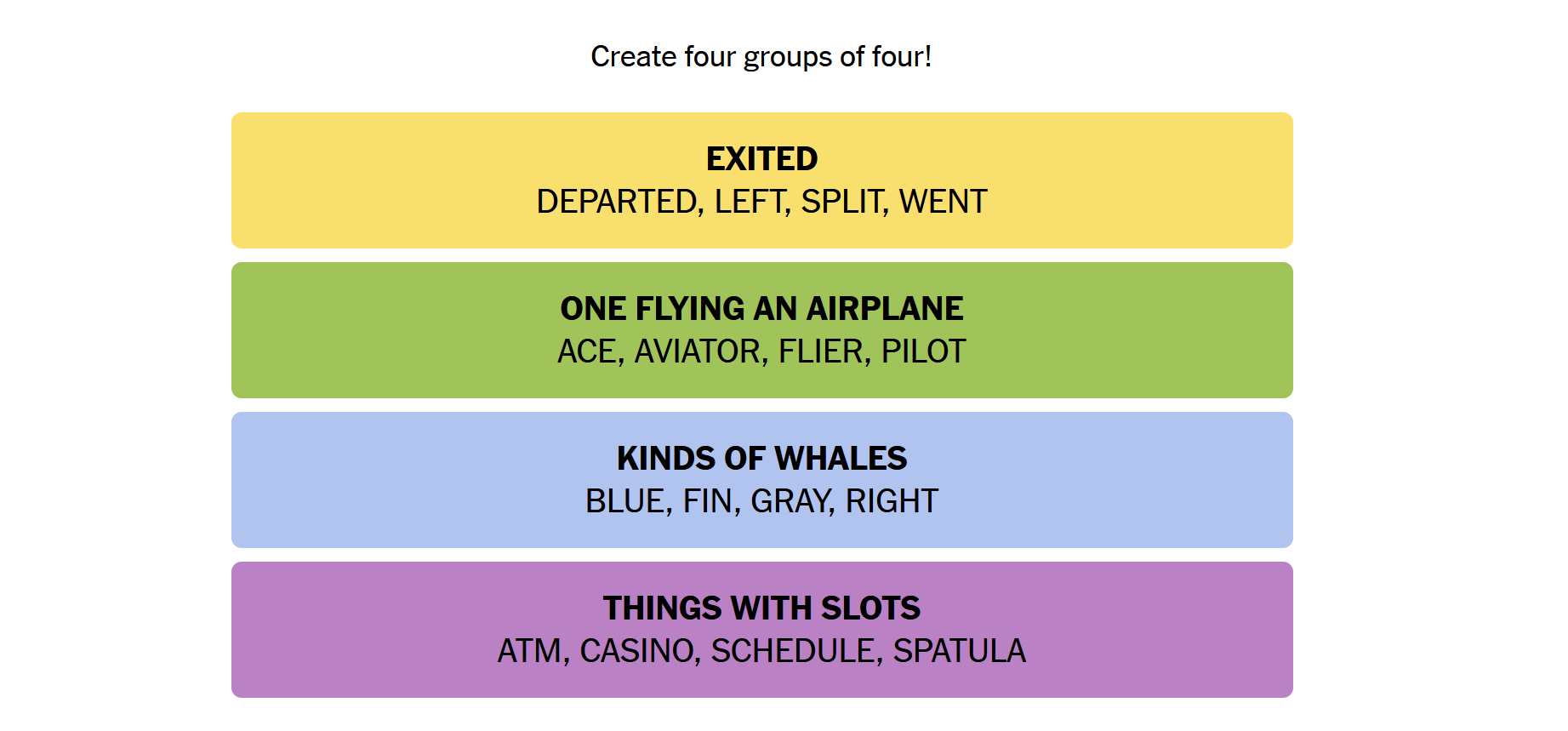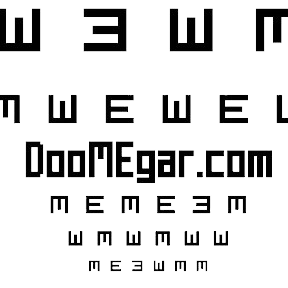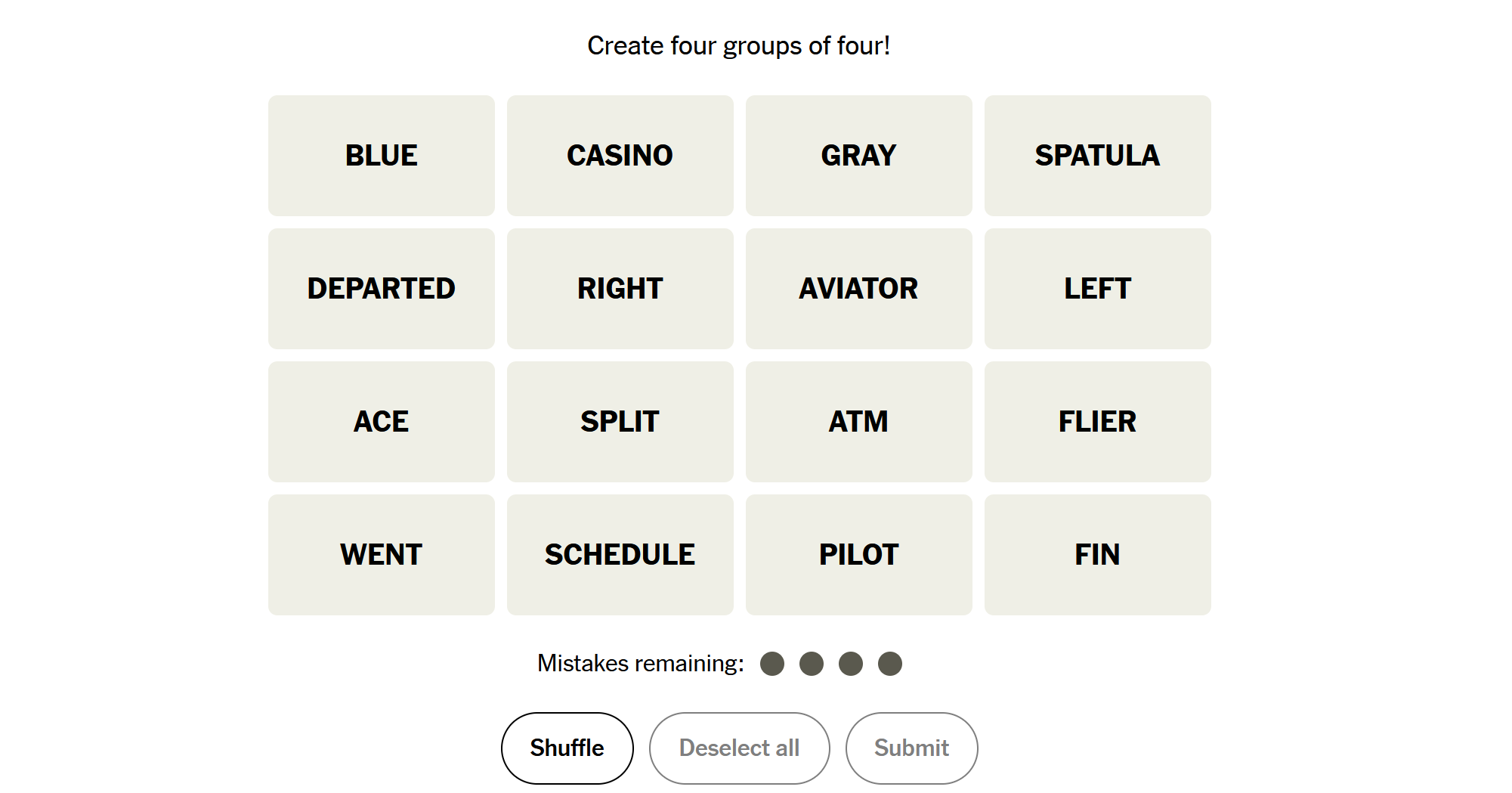Mind the spoilers at the end!
Connections is a game from the New York Times that challenges you to find the association between words. It sounds easy, but it isn’t—Connections categories can be almost anything, and they’re usually quite specific. If you need a hand getting the answers, we’ve got you covered.
What Is Connections?
Connections is a puzzle game from the New York Times. The objective is simple: sort 16 words into groups of 4. Each group of words will be connected by some common idea or theme. That common element could be anything from the number of letters in the words to a common use for all the words. Once you’re confident, select 4 words, then hit “Submit.” You have only four attempts in total, so don’t be too guess-happy.
Hints for Today’s Connections Categories
Here are a few small hints to get you started on the 296th Connections game.
- Yellow: Not showing up
- Green: Professional and recreational
- Blue: Found in oceans
- Purple: Not to be confused with holes
What Are Today’s Connections Categories?
If you’re still struggling, the actual categories are:
- Yellow: Exited
- Green: One Flying an Airplane
- Blue: Types of Whales
- Purple: Things with Slots
Today’s Connections Answers
 Yellow:
Yellow:
Departed, Left, Split, Went
Green:
Ace, Aviator, Flier, Pilot
Blue:
Blue, Fin, Gray, Right
Purple:
ATM, Casino, Schedule, Spatula
How Did We Solve This Puzzle?
The first word we noticed on this board was blue and immediately started searching for other colors, hoping that the New York Times might have thrown us an easy one. Not to make things too easy, there is only one other color word on today’s Connection game: gray. So, that means we’re probably looking for things that come in blue, gray, and two other non-color words. There are such things are blue and gray whales, and, unluckily for us, there are also right whales, pilot whales, and fin whales. We settled on blue, gray, right, and fin because there are three other words on the board that describe people that fly besides pilot—aviator, ace, and flier.
Blue, gray, right, and fin turned out to be correct for the blue category, which is named “Kinds of Whales” today.
We already had our next group after working out the whale problem. Ace, aviator, flier, and pilot. These words worked for “One Flying an Airplane,” which was green.
We had left, split, atm spatula, went, schedule, departed, and casino remaining.
Left, split, departed, and went are all words that we use to describe the past tense of “leave” or “to go,” and we tried those four together. They all fit into the yellow “Exited” category.
ATM, Casino, Schedule, and Spatula are the only four left, and frankly, that was very lucky. It was not immediately apparent what tied them together. It turns out that the purple category was “Things with Slots”—a pretty tough one.
How Do You Guess Connections Categories?
There is no quick, reliable way to approach Connections like there is with Wordle, since Connections isn’t algorithmic. However, there are a few things to keep in mind that can help.
- Look for similar parts of speech. Are some words verbs and others nouns? Are some adjectives? Try mentally grouping them based on those categories and see if any other patterns jump out at you.
- Are the words synonyms? Sometimes categories will just be synonyms for a phrase, or very close to synonyms. Don’t rely too closely on this, though. Sometimes Connections will deliberately throw in words that are sometimes synonyms to mislead you.
- Try saying the words. Sometimes, saying the words helps. One puzzle we saw included the words go, rate, faster, clip, pace, speed, move, commute, and hurry—all of which are obviously related to the idea of motion. However, when you say them, it becomes a little more obvious that only four (go, move, hurry, faster) are things you’d actually say to prompt someone to get moving.
- Expect the red herring. Connections usually has words that could be plausibly, yet incorrectly, grouped together. Take the words Bud, Corona, and Light, as an example. You might instinctively see those three words together and assume they’re lumped together in a category related to beer—but they weren’t.
- Look for distinct words. If a word on your board doesn’t have multiple meanings or can really only be used in one context, try using that word as the basis for a category.
If you didn’t solve this one, don’t feel too bad—there’s always tomorrow! And those words may align with a topic you’re interested in, giving you a leg up on the competition.



دیدگاهتان را بنویسید